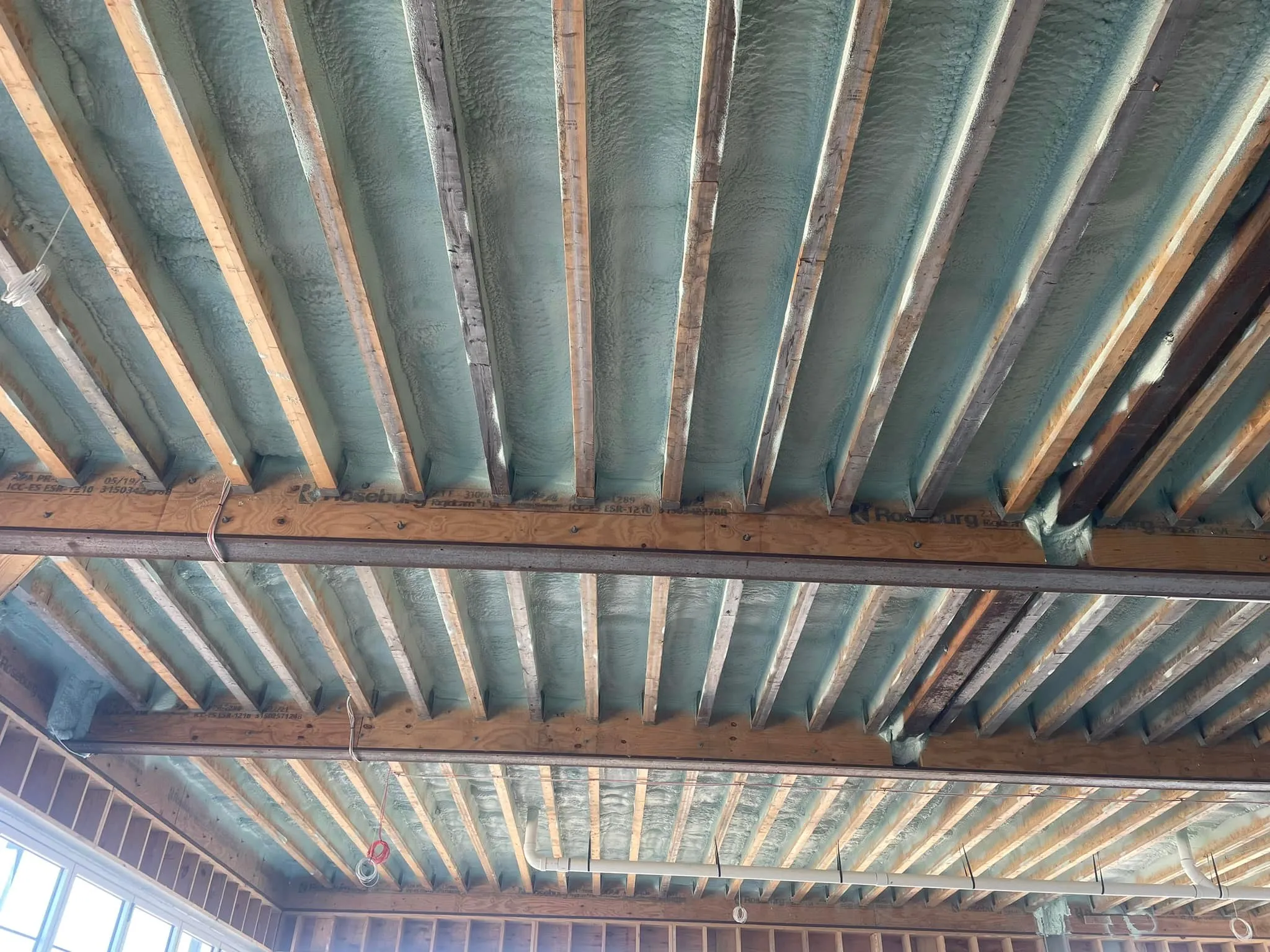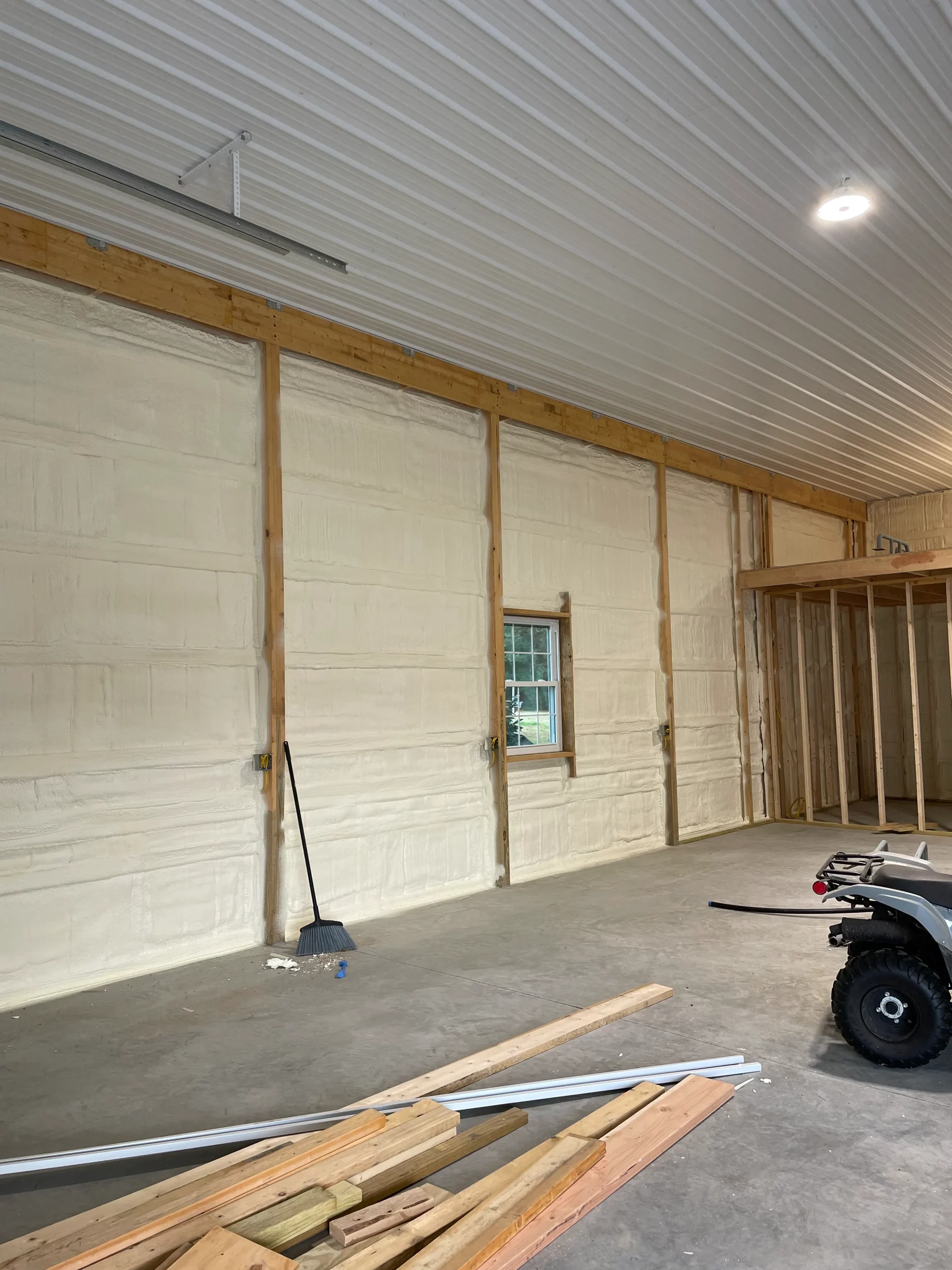
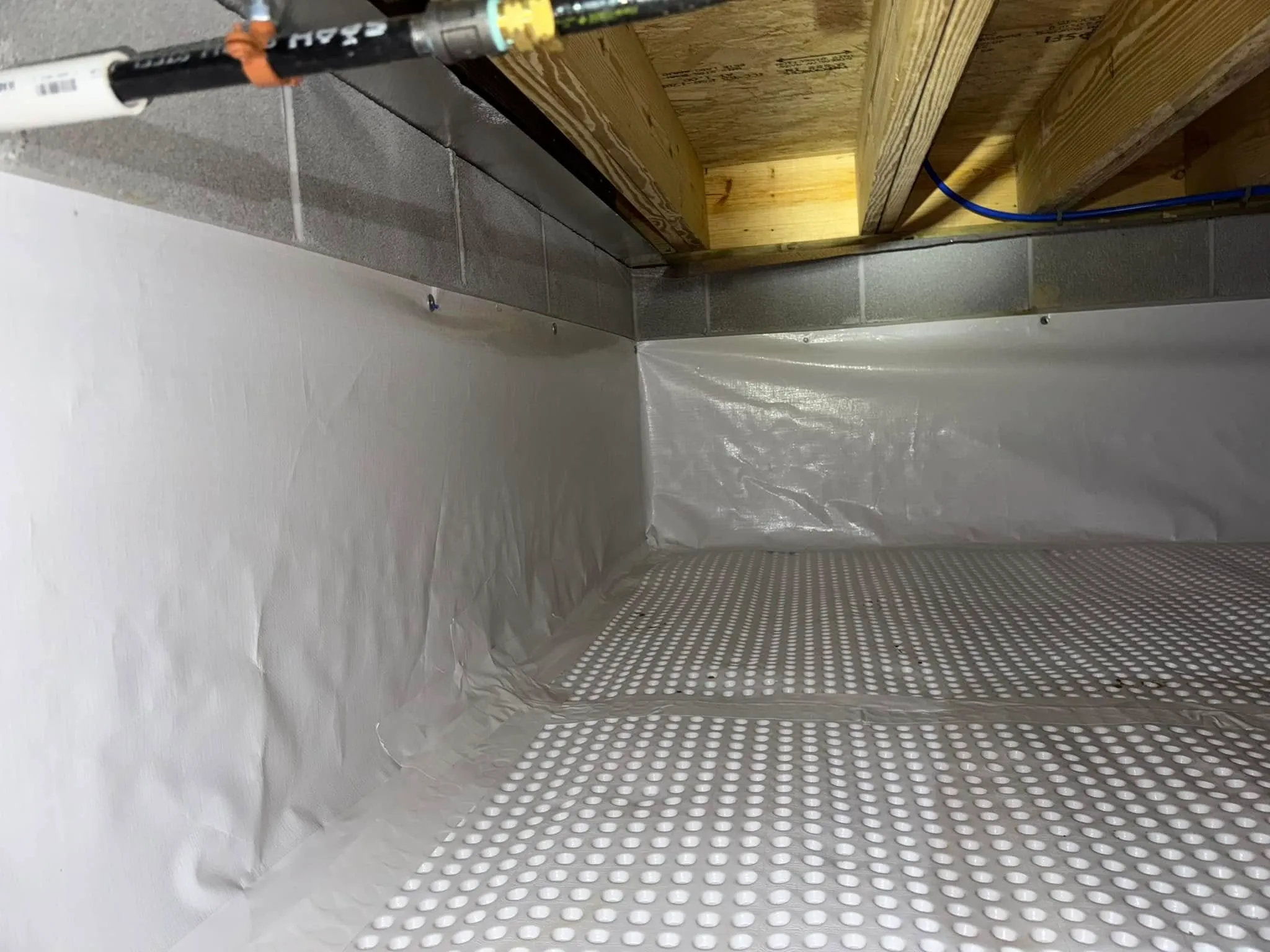
That dark, musty space beneath your floors is easy to ignore. For most homeowners, the crawl space is out of sight and out of mind. But what if that neglected area was silently undermining your home’s health, driving up your energy bills, and even affecting the air you breathe every day? The truth is, a traditional dirt or vented concrete crawl space is often a source of moisture, mold, pests, and poor air quality that permeates the entire house. It’s a foundational problem that can’t be solved with superficial fixes.
This is where crawl space encapsulation comes in. It’s a definitive solution that involves completely sealing the crawl space from the earth and outside air, creating a clean, dry, and conditioned environment. This guide is designed to be your complete resource on the subject. Drawing from years of hands-on experience sealing and insulating homes, Peninsula Insulation, LLC has put together this page to walk you through everything you need to know. We’ll explore what encapsulation is, why it’s so important, what the process involves, and the tangible benefits you can expect.
By the end of this guide, you will understand:
Before we get into the solution, it’s important to understand the problem. Your crawl space is more connected to your living space than you might think, and its condition has a direct impact on your home.
A crawl space is a shallow, unfinished area between the ground and the first floor of a home. Historically, these spaces were built with vents under the assumption that allowing outside air to circulate would keep the area dry. We now know that in most climates, especially humid ones, this approach does the opposite. Vented crawl spaces invite moisture-laden air in, which then condenses on cooler surfaces like floor joists and ductwork, creating a perfect environment for trouble.
An open, unsealed crawl space is a breeding ground for a host of problems that can compromise your health and your home’s structure.
The air in your crawl space doesn’t stay there. A phenomenon known as the “stack effect” causes air to flow upward through your home. Air enters through the lower levels (like the crawl space), rises as it warms, and escapes through the upper levels. A report on building science from Advanced Energy explains that as much as 50% of the air in your first floor can originate from the crawl space. This means any mold spores, dust mite allergens, and musty odors from down below are pulled directly into the air you and your family breathe.
Crawl space encapsulation is the process of completely isolating the crawl space from the ground and the outside air. It turns a damp, dirty, and problematic area into a clean, dry space that is a controlled part of your home’s environment.
True encapsulation isn’t just about laying down a sheet of plastic. It’s a comprehensive system designed to control moisture from every angle. It involves sealing all sources of air and water intrusion and then actively managing the air to maintain a healthy level of humidity.
A successful encapsulation project includes several key parts working together:
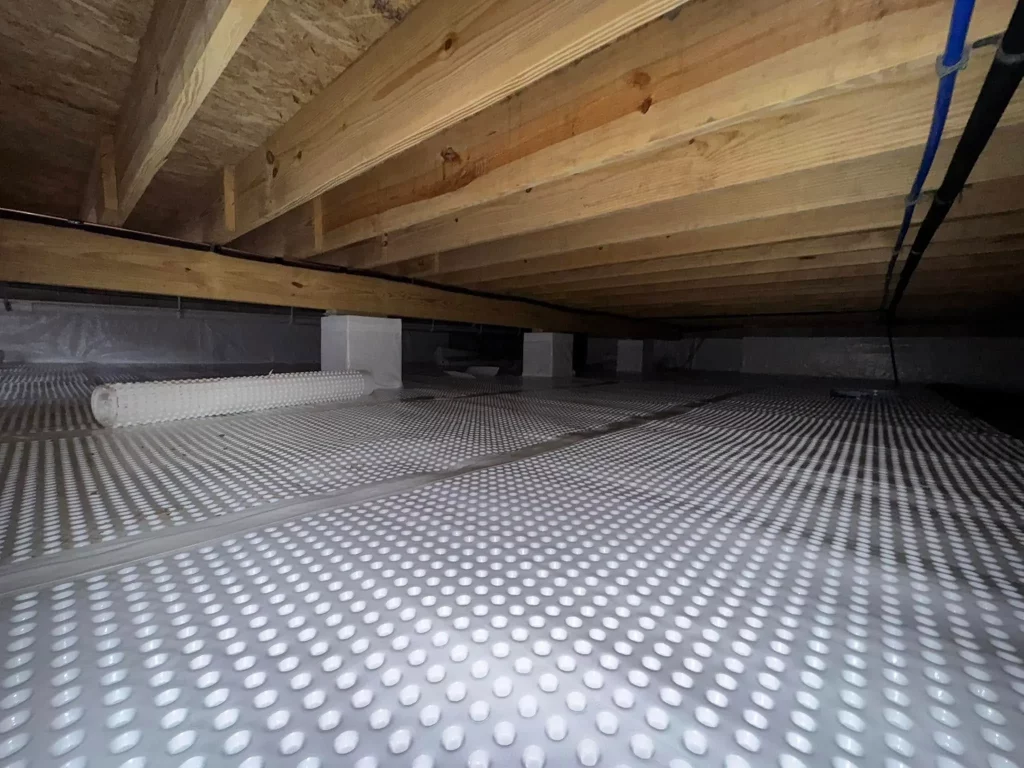
The difference between a modern, encapsulated crawl space and an old-fashioned vented one is night and day.
| Feature | Vented Crawl Space | Encapsulated Crawl Space |
|---|---|---|
| Foundation Vents | Open to the outside | Permanently sealed |
| Ground Cover | Exposed dirt or thin plastic | Heavy-duty, sealed vapor barrier |
| Humidity Level | Uncontrolled, often >70% | Controlled, maintained <50% |
| Air Quality | Poor (mold, dust, musty odors) | Clean and healthy |
| Energy Efficiency | Low (energy loss through floors) | High (conditioned space reduces load) |
| Pest Access | Easy entry points | Sealed against pests |
| Structural Risk | High risk of wood rot and mold | Low risk; wood is protected |
Crawl space encapsulation fundamentally changes the environment beneath your home. By stopping moisture from the ground with a vapor barrier, blocking humid air by sealing vents, and actively managing the air with a dehumidifier, you create a space that is clean, dry, and healthy. This eliminates the conditions needed for mold, pests, and wood rot to thrive, protecting your home and improving your indoor air quality.
A professional crawl space encapsulation project follows a precise set of steps to ensure a complete and lasting seal. While the specifics can vary based on the home, the core process remains the same.
The first step is always to prepare the space. This involves removing any old, failing insulation, discarded construction debris, and any organic material. If there’s standing water, it must be addressed with proper drainage solutions before any other work can begin.
Next, all outside air vents are sealed from the inside to stop the flow of unconditioned air. Technicians will also seal any gaps around pipes, wiring, and the sill plate where the foundation meets the home’s wooden frame.
Expert Tip: Pay close attention to the rim joist area. This is a major source of air leakage in many homes and must be meticulously sealed with foam or caulk for the encapsulation to be effective.
With the space prepped and sealed, the heavy-duty vapor barrier is laid down. It covers 100% of the dirt or concrete floor. The liner is also run up the foundation walls and around any support piers. All seams are overlapped and sealed with special moisture-impervious tape to create a single, continuous membrane that blocks ground moisture.
Once the vapor barrier is in place, insulation is added to the foundation walls. Rigid foam board is a common choice because it resists moisture and provides a thermal break. Alternatively, closed-cell spray foam can be used to both insulate and air-seal the walls in one step. This step is what separates the crawl space from the outside temperature, making it a conditioned part of the home.
Expert Tip: Insulating the walls, not the ceiling (the underside of your floor), is the correct method for an encapsulated crawl space. This brings your ductwork and pipes inside the conditioned envelope of the home, which improves HVAC efficiency.
The final, critical step is to install a commercial-grade crawl space dehumidifier. This unit will automatically monitor the relative humidity and cycle on as needed to keep the air dry and stable. A condensate pump is typically installed to automatically drain the collected water so you never have to empty a reservoir.
Investing in crawl space encapsulation delivers a wide range of benefits that you’ll notice throughout your home.
With up to half of your indoor air coming from the crawl space, cleaning up that environment has a direct positive effect on the air you breathe. By eliminating mold, dust mites, and damp odors at the source, encapsulation helps reduce allergens and irritants, making the home healthier for everyone, especially those with allergies or asthma.
Encapsulation can lead to significant energy savings. A study conducted by Advanced Energy found that homes with a closed, conditioned crawl space saw an average of 15% reduction in heating and cooling costs. By insulating the walls and stopping cold or hot air from entering, your HVAC system doesn’t have to work as hard to maintain a comfortable temperature.
Moisture is the number one enemy of your home’s foundation and wooden floor structure. A dry crawl space prevents the slow, silent damage caused by wood rot, protecting your floor joists and beams from decay. This helps you avoid sagging floors and extremely costly structural repairs down the road.
A sealed, dry crawl space is far less attractive to pests. By sealing entry points and eliminating the moisture that insects like termites need to survive, encapsulation creates a powerful barrier against unwanted guests.
Once encapsulated, your crawl space transforms from a dirty, unusable area into a clean, dry, and brightly lit space. It becomes the perfect spot for storing seasonal decorations, tools, and other items that don’t belong in the main part of your house, effectively adding valuable storage real estate to your home.
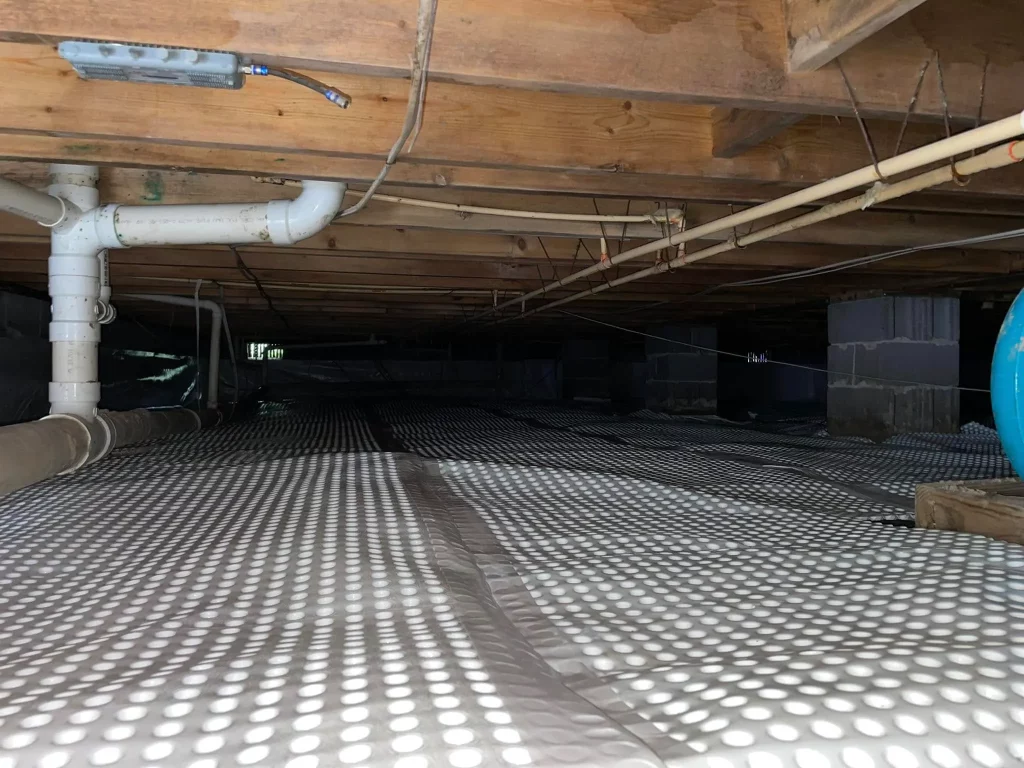
The materials chosen for an encapsulation project and the existing condition of the crawl space are the primary drivers of the final cost.
The industry standard for a quality vapor barrier is a minimum of 12-mil thickness, but 20-mil reinforced liners offer superior durability and puncture resistance. These liners are made of polyethylene and are often string-reinforced for added strength, ensuring they won’t tear during installation or when used for storage.
There is no one-size-fits-all price for encapsulation. The final cost depends on several factors:
Though it requires an upfront investment, data from home improvement sources often suggests that projects like crawl space encapsulation can offer a strong return on investment by preserving property value and reducing energy costs.
While the process seems straightforward, a few common errors can compromise the entire system.
Expert Tip: While a DIY approach might seem tempting to save money, encapsulation is a project where precision matters. An improper installation can trap moisture instead of blocking it. A professional assessment can also identify underlying drainage issues that need to be fixed first.
For an average-sized home, a professional installation typically takes 2 to 4 days, depending on the condition and complexity of the crawl space.
Yes. A clean, dry, and energy-efficient crawl space is a significant selling point. It gives potential buyers peace of mind that the foundation is protected and the home is healthy, which can positively impact resale value.
Encapsulation helps in pest control by sealing entry points and creating a dry environment. However, you should still maintain a termite bond and have regular inspections. Many encapsulation systems include a clear inspection gap at the top of the wall to make this easy.
The ideal relative humidity for an encapsulated crawl space should be maintained between 35% and 50%. This range is too dry for mold to grow or for dust mites to thrive.
For most homeowners, the long-term benefits far outweigh the initial cost. When you factor in the energy savings, prevention of costly structural repairs, improved air quality, and added home value, encapsulation is one of the most effective investments you can make in your property.
Absolutely! One of the great benefits is gaining a clean and dry storage area. The heavy-duty liners are durable enough to handle storage containers and foot traffic.
Your crawl space is the foundation of your home, and its health is directly tied to the health of your entire living environment. As we’ve seen, leaving it vented and exposed to the elements is an outdated practice that can lead to moisture damage, poor air quality, high energy bills, and pest problems. By sealing vents, installing a durable vapor barrier, insulating the walls, and conditioning the air, you can permanently transform this problematic area. Crawl space encapsulation is a proven, reliable solution that protects your investment, improves your family’s health, and makes your home more comfortable and efficient.
If you suspect your crawl space might be causing problems in your home, a professional inspection is the best way to get clear answers. The experienced team at Peninsula Insulation, LLC can provide a thorough assessment and explain the best options for your specific situation. To schedule a consultation, you can reach out to us by email at wil@mdsprayfoam.net or by phone at (410) 770-2624.

